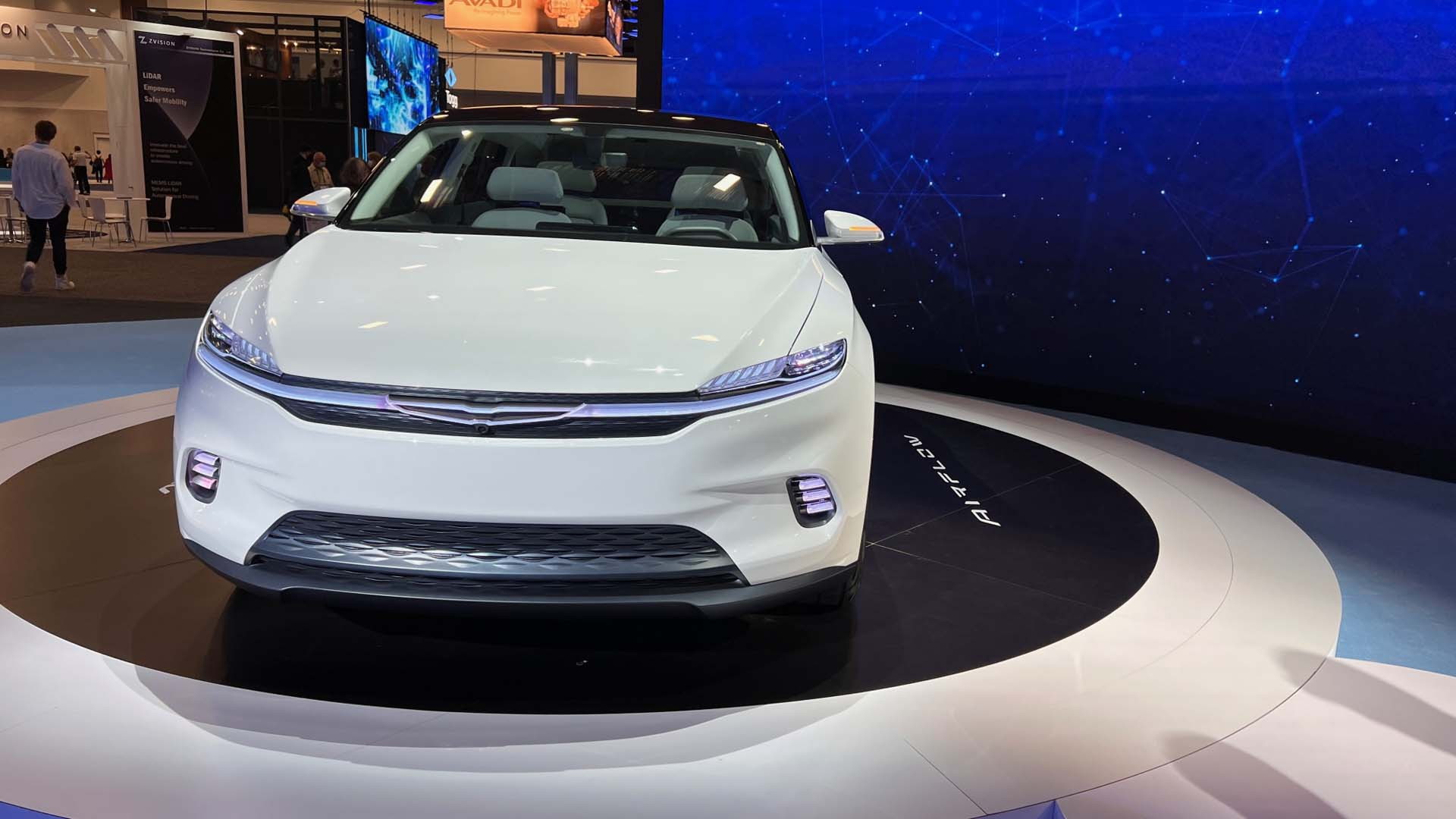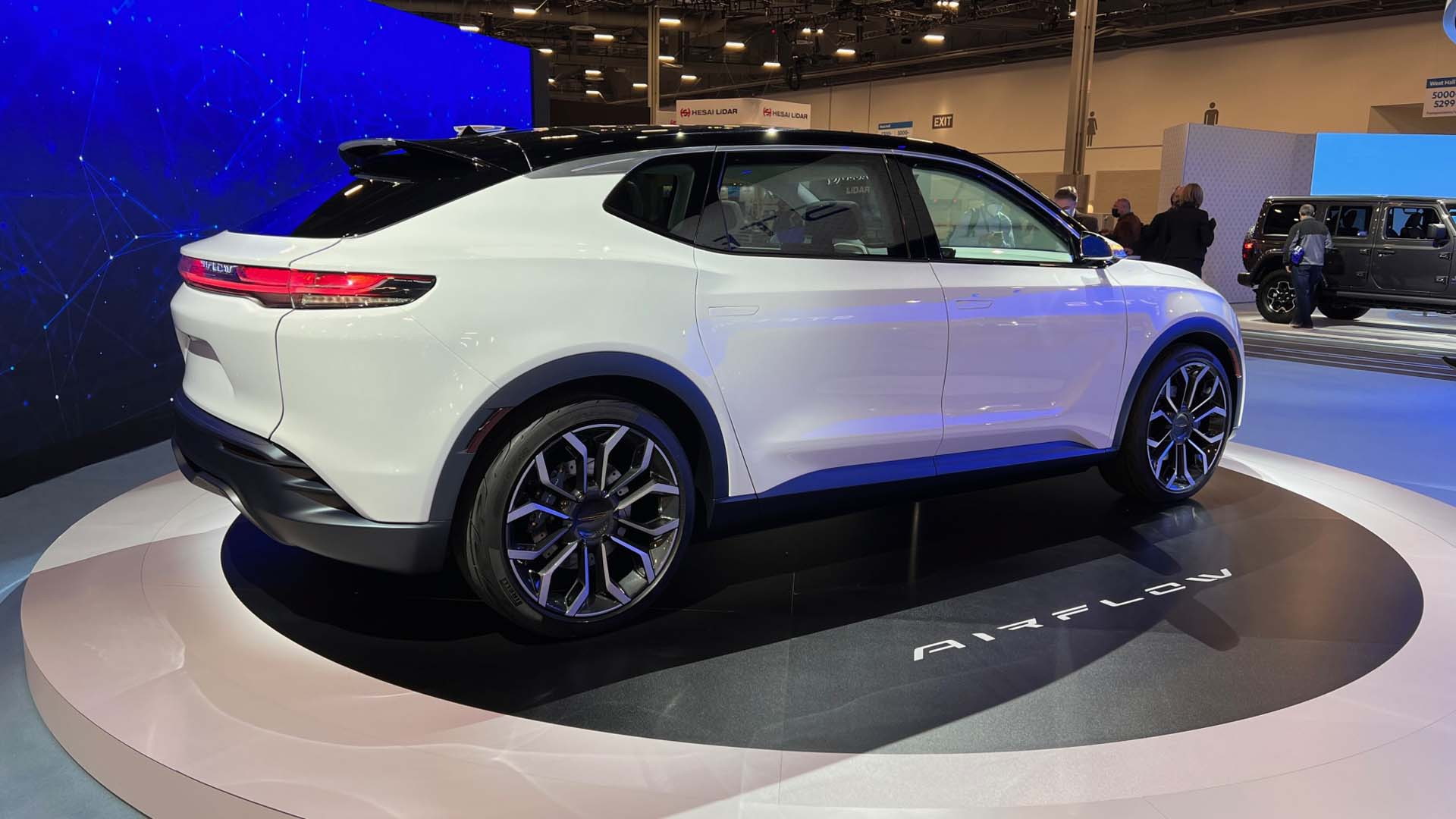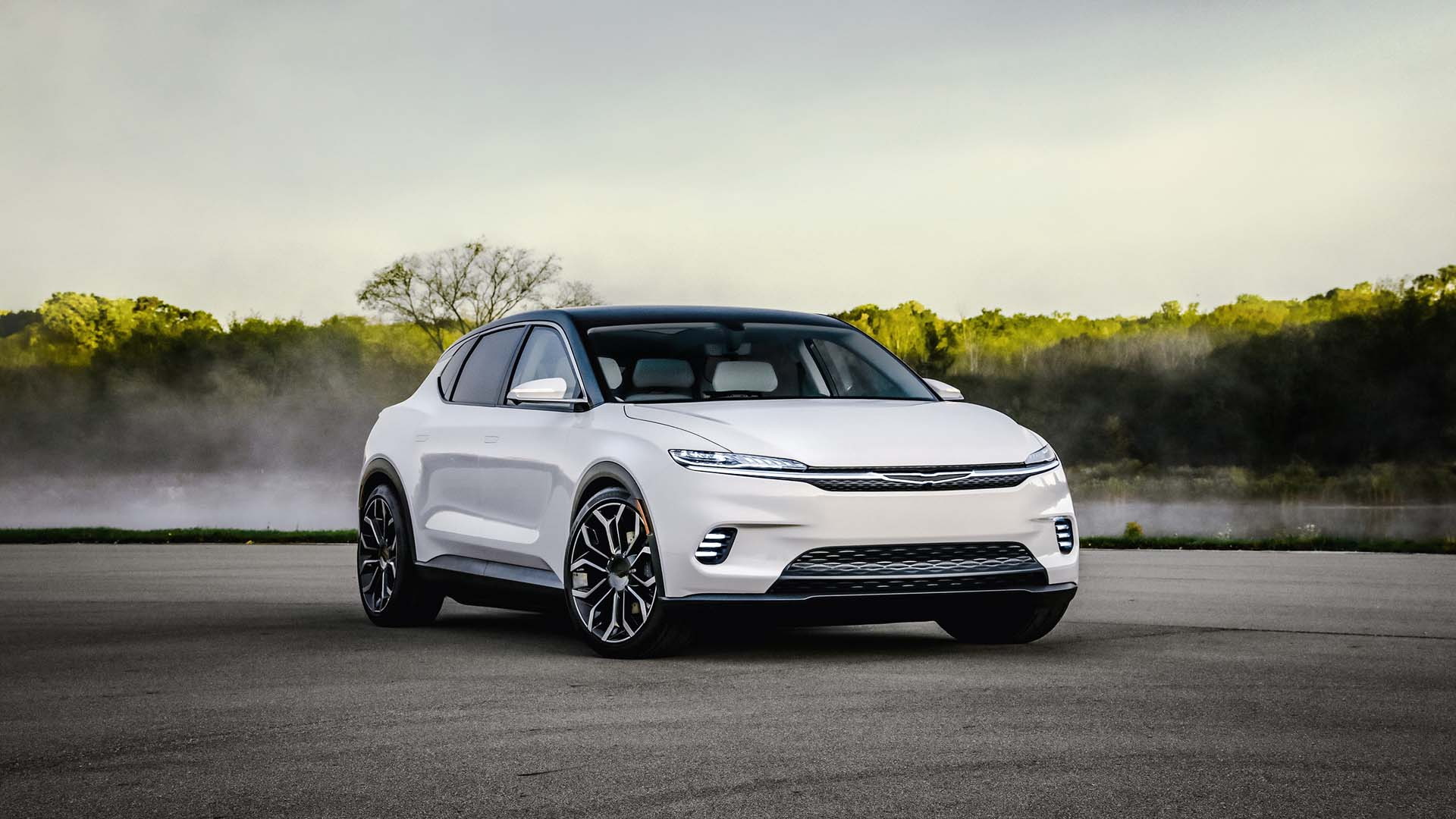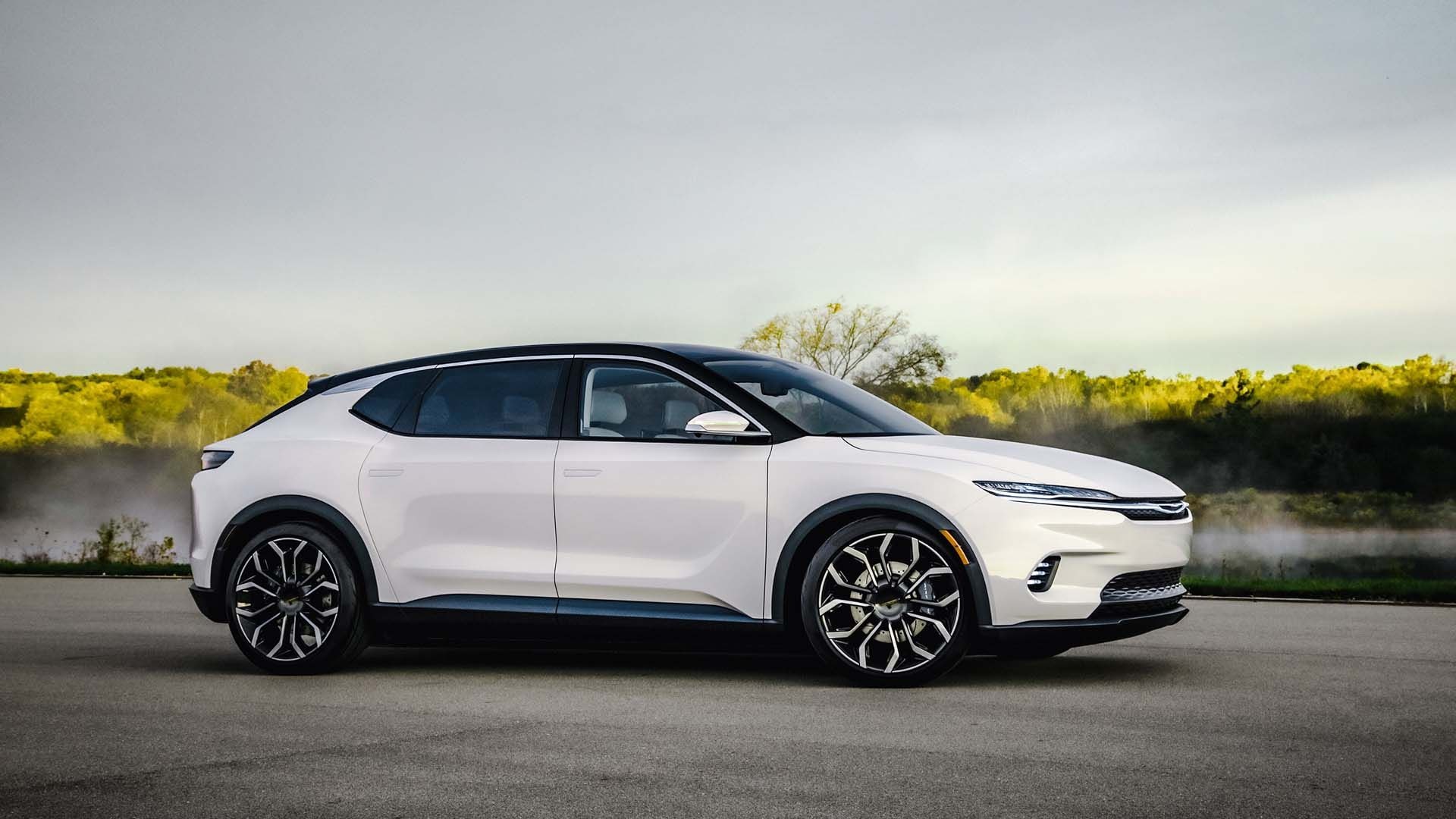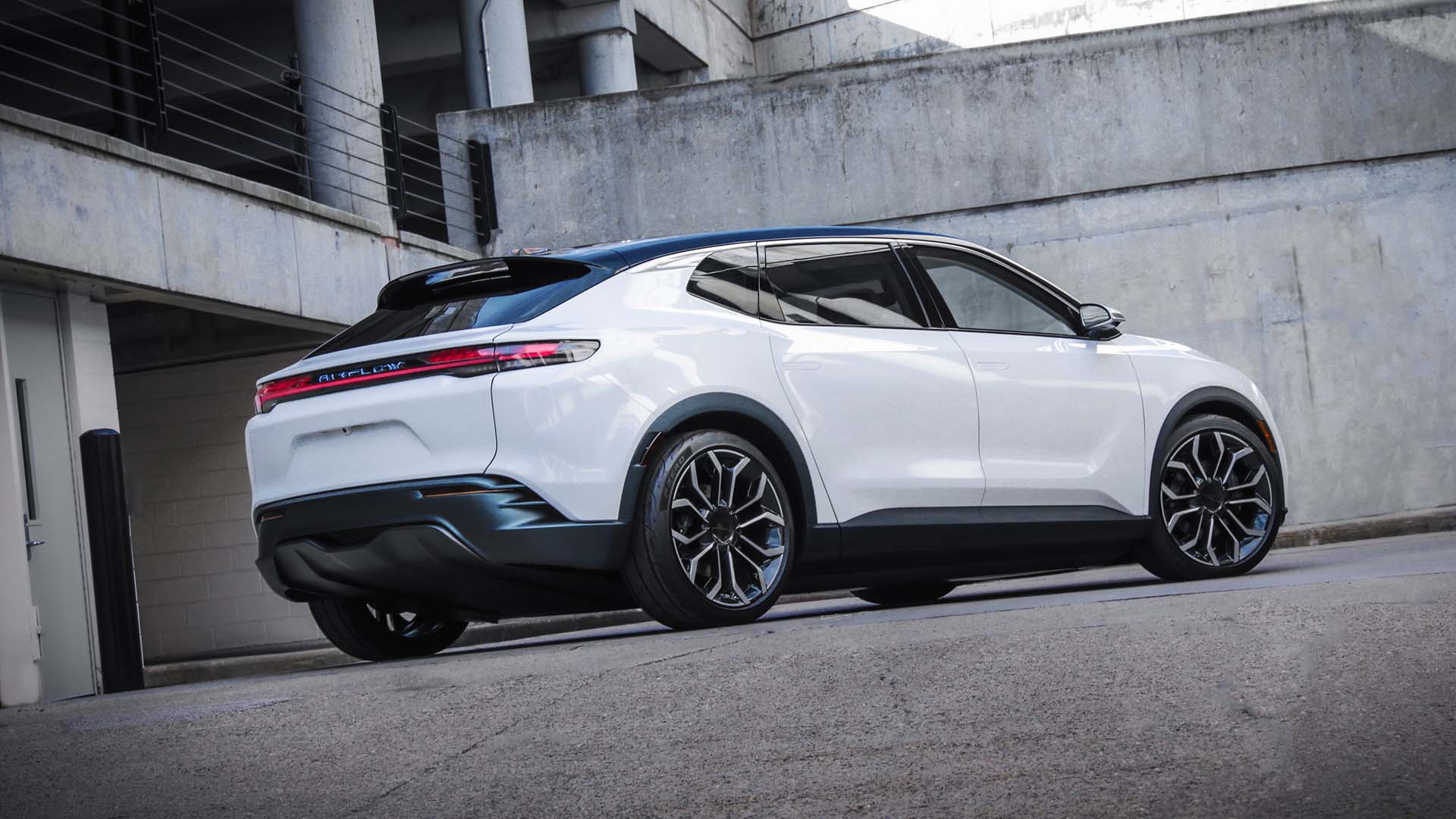Chrysler has looked a little moribund in recent years but that's set to change under the guidance of new parent company Stellantis.
The brand plans to go the full-electric route by as early as 2028, and will launch its first electric car by 2025. As a preview of what that electric future might be like, Chrysler is presenting the Airflow concept at the 2022 Consumer Electronics Show getting underway in Las Vegas later today.
The Airflow is a sleek electric crossover with a claimed range of between 350 and 400 miles, plus fast-charging capability and Stellantis' recently announced artificial intelligence-backed software platforms covering the car's operating system (STLA Brain), infotainment system (STLA SmartCockpit), and self-driving system (STLA AutoDrive). Power comes from an electric motor at each axle, each rated at 201 hp.
The interior has an open and airy feel thanks to light tones and a wide panoramic sunroof. The highlight here is the new dash design which features three screens spanning almost the full width of the dash. There's also a camera facing each seat, enabling occupants to participate in a video conference call if desired.
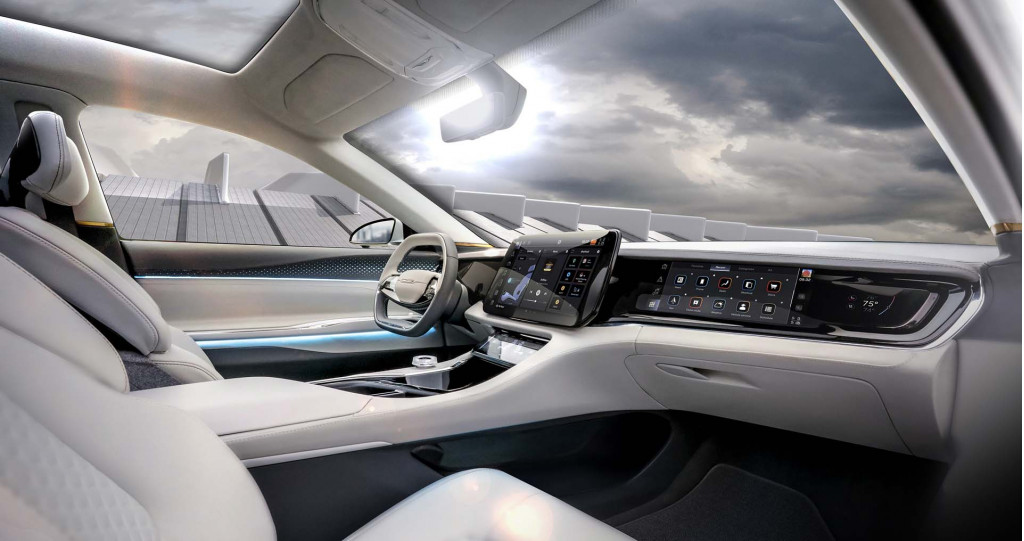
Chrysler Airflow concept

Chrysler Airflow concept
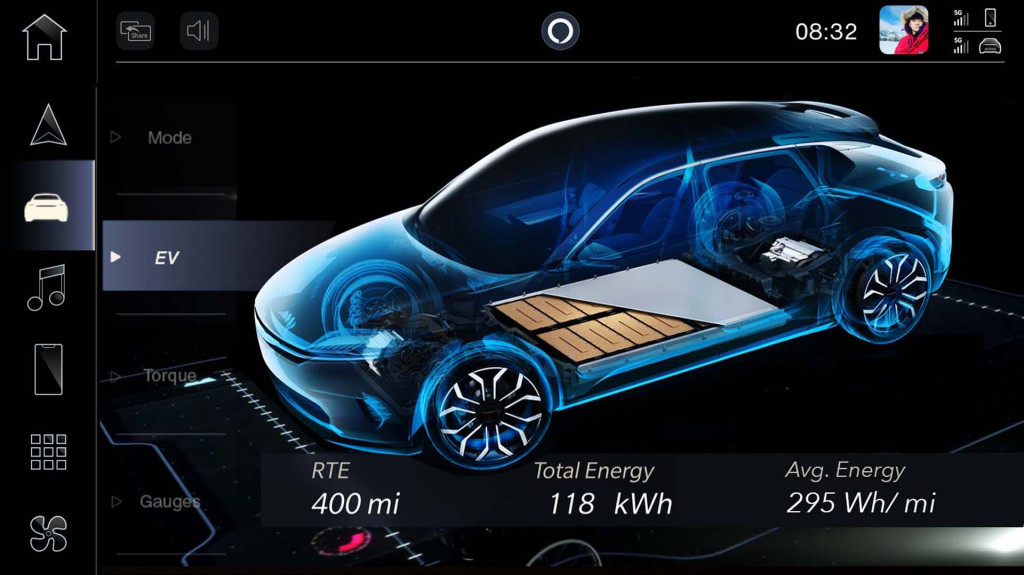
Chrysler Airflow concept
Chrysler also mentions that the Airflow is fitted with a self-driving system rated at Level 3 on the SAE scale of self-driving capability. Chrysler didn't provide details on the situations in which the Airflow can handle itself, but the Level 3 rating indicates that, in certain situations, the concept can handle itself but requires the driver to be ready to take back control at any time.
Chrysler stopped short of confirming the Airflow for production, but new CEO Christine Feuell said in a statement that the concept previews technologies bound for future electric vehicles and that it represents the future direction of the brand—namely one that's electrified and connected.
Fans of the brand will also recognize the link with the original Chrysler Airflow (actually a family of models) of the 1930s, which was the first production car designed for low aerodynamic drag using a wind tunnel. While it ended up being a sales dud, the Airflow is remembered today for its engineering innovation, many of which feature in modern cars. For example, it moved the engine forward, which improved passenger space. Passengers also sat between the axles, which improved comfort. Airline engineering principles also created a lighter, stiffer body, making the car fast for its day.
For more CES news, head to our dedicated hub.

